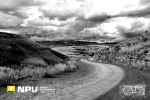
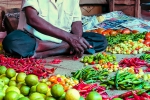
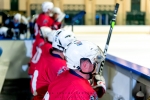
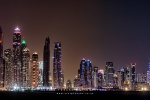
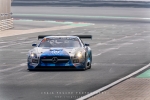
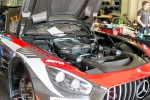
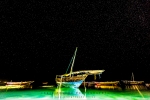
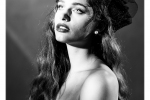
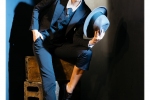
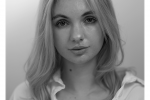
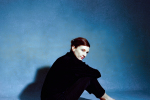
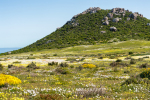
By Bjorn Petersen

There is no doubt that digital photography is here to stay, and film has certainly seen better days, in terms of availability and affordability. However, what if you’re a digital photographer who simply wants to shoot a roll of film every once in a while for fun? Film photography has a distinct look that, even with the latest and greatest 50MP cameras, cannot be duplicated by digital imaging. It’s subjective to say whether one look is better or worse, but there is no denying that there is a unique quality to film. Back in the halcyon days of film photography, you could easily drop your rolls off at the local lab or drug store, come back an hour or day later and have nice 4 x 6″ prints along with a sleeve of negatives. Nowadays, this simple convenience is becoming harder and harder to acquire, and even if you’re able to find a professional lab to develop your film, you usually won’t want to pay the premium for all of those prints to be made.
This is where being able to scan your negatives makes practical sense. A common process that photo labs have been using for years, as well as nearly any kind of printing production process, a scanner acts much like your regular camera; its job is to record an image. The difference is that the scanner is a very specific image-making device, designed only for reproduction. Scanners come in many sizes and are able to perform a range of functions, some of which are able to scan film. Split into two main categories for consumer use, there are flatbed scanners and film scanners. Flatbed scanners have a large glass surface and can record reflective materials, and some incorporate a transparency unit for scanning film and transparencies. Film scanners, on the other hand, are primarily dedicated to only scanning transparent originals, albeit usually at a higher quality than a flatbed scanner.
“Luckily for most photographers, a truly sound tool for digitizing your film is something you likely already have: a digital camera.”
Scanning is a common process that most film shooters in the last 20 or so years have come to incorporate into their practice in some manner, whether it is for scanning film or your prints to share online or make digital prints. While a scanner is certainly a sound investment for those who shoot and need to scan large amounts of film, sometimes it is not the most practical investment. If you’re the type of photographer who will only shoot a handful of rolls a year, or if you’re the type of photographer who enjoys using medium and large format films, finding a suitable scanner can become a greater expense. Most dedicated film scanners seldom accept medium format film, let alone sheet film of any size.
Luckily for most photographers, a truly sound tool for digitizing your film is something you likely already have: a digital camera. As previously mentioned, a scanner functions much like a regular picture-taking camera, and likewise a camera can be used to perform similar functions as a scanner. Chief among these is the ability to re-photograph or duplicate your film for digital use. And with DSLR and mirrorless cameras’ resolutions on the rise, you now have the ability to produce high-resolution digital files of your film for printing and simple online sharing.
As someone who primarily shoots film, this was a technique I have wanted to try for quite some time. I’ve already become accustomed to working with both flatbed and dedicated film scanners for some time, but I had been hearing about a number of potential advantages for using a camera to digitize film. Chief among them was the possible dynamic range, and the ability to extract greater shadow and highlight detail from negatives than a scanner. Modern sensors are often touted to have a wide dynamic range, and you frequently hear claims such as, “this camera has a 12-stop dynamic range.” Assuming this is true, this range often exceeds the amount of detail in most film and, as such, should be a good match for gaining as much detail as possible from the film. Another advantage is the ability to shoot raw files for greater flexibility when processing images. Just like normal shooting, the greater range of information in a raw file even benefits working in controlled situations.
One of the drawbacks I foresaw, however, was the resolution. Even though DSLR and mirrorless cameras are at an all-time peak in resolution, the highest native file sizes still produce images of around 24 x 30″, at best. This is a number that is pretty easily matched with a scanner. However, this is a non-issue if simply digitizing your film for Web sharing or some smaller prints, which is the same practical limit of most flatbed scanners, in actuality.
With these ideas in mind, I set out to do a fairly non-scientific comparison between three classes of image-capturing devices to test the viable limits of each, as well as the strengths and weaknesses of one process versus another. For the camera setup, I worked with a Nikon D800 fitted with the AF-S VR Micro-NIKKOR 105mm f/2.8G IF-ED lens, and was backlighting my film with the Logan Electric 4 x 5″ Slim Edge Light Pad. For the scanning portion of the test, I worked with both a flatbed and film scanner: an Epson Perfection 4870 flatbed scanner and the Imacon Flextight 646 virtual drum scanner. While it is possible to scan reflective material with the Imacon, it is primarily a film scanner by reputation.
 |
 |
Black & White 4 x 5″ and 6 x 7 negatives photographed with a Nikon D800 and AF-S VR Micro-NIKKOR 105mm f/2.8GIF-ED Lens
Before delving into the comparison, I first wanted to give a breakdown of the process I used for photographing my film with the DSLR, along with the steps I took to convert my out-of-the-camera files to usable images. The basic premise of this method is to photograph your film against a backlit surface using a macro lens. The closer you are able to get to the film, the higher the magnification you can achieve, and the higher-resolution results you’ll have for your file. Without working with a copy stand, the next best method to ensure consistency and accuracy is to photograph atop a tripod and, in my case, I worked with the tripod pointed straight down at the film. I also decided to work with the film holders from the flatbed scanner for easier handling of the film and to slightly elevate the film above the light box to avoid picking up any texture from the Plexiglas surface. If I were planning on making this a more full-time, repeatable operation, I would likely look into something that would guarantee me consistent registration and a more taught film surface that the holders provide, but in a pinch this solution worked well.
For the image settings in the camera, I wanted to record the absolute highest-resolution, most detailed files possible. I photographed at the full 36.3MP resolution, set the lens to its middle aperture to get the greatest combination of depth of field without diffraction, shot in raw+JPEG, in the Adobe RGB color space. I bracketed my exposures in ⅓ EV steps for a stop or two on each end, and also worked with the self-timer to lessen any chances of causing vibrations.
From here, the process was very straightforward: with each negative, I would take the same precautions to eliminate dust as I would during scanning, which included a firm wipe between layers of an anti-static cloth, then position the film inside the film holder, give some final quick bursts of air to both sides, and place the film holder on top of the light box. With the negative in place, I would adjust the height of the camera on my tripod, using the center column, and would try to fill as much of the image frame as possible with the film. Finally, I would manually focus using the rear LCD of the camera when working in live view; I would magnify the image and usually pick a sharp edge within the film image or just focus on the text on the side of the roll of film. Next I would record my series of bracketed exposures and move on to the next piece of film.
Armed with several versions of each negative I re-photographed, I imported my files into my computer and sorted them according to the corresponding negatives. Throughout the shooting process I photographed both color and black-and-white negatives, and I primarily photographed my medium format, 6 x 7 film. Besides these being my personal tastes when shooting film, they also seemed to be a prime area to investigate using this new technique—35mm film scanners are fairly prevalent and slides or positive film would not require the same scrutiny during post production, unlike negatives (especially color negatives, due to the orange mask). Medium format is a size of film that is more difficult or more expensive to digitize, just due to the more specialized equipment needed.
When converting the negatives to positives, I chose to work in Adobe Camera Raw with the NEF files, prior to doing any fine-tuning in Adobe Photoshop. Beginning with the black-and-white film, I knew ahead of time this would be the easier of the two, since there would be no color cast to deal with. Here are the basic steps I used to convert the black-and-white negative to a positive grayscale image:

1. Since color casts aren’t going to affect black-and-white imagery as much as color images during post production, I moved straight to the curves in Camera Raw and inverted the curve.

2. I had a pretty flat image, mainly due to the overcast lighting conditions and the development process I use for my film. Much like when recording video or even shooting stills, a flat image is much easier to work with than an overly contrasty one. Here I just bumped the contrast some and tinkered with the other exposure controls before opening in Photoshop.

3. I still have an RGB image when I start working in Photoshop, so I use the black-and-white conversion tool to bring a bit more contrast out of any remaining color in the file prior to converting the image to a grayscale working space.
  |
4. I use a curves adjustment layer to fine-tune the contrast and brightness of the image.

Overall, this is a pretty simple process with nothing too special going on. The tonality is really nice and the photograph of the negative has contained the highlights and brought out the shadow details well.
 |
 |
 |
| Nikon D800 | Imacon Flextight 646 | Epson Perfection 4870 |
Moving onto a color negative, I knew the process was going to be a bit trickier to deal with the orange mask of the film. Scanners are tuned to deal with this mask already, so the effect of it is pretty moot when using a film or flatbed scanner. When photographing the negative, however, it became my main concern.

1. The most effective way I found to negate the orange mask was to treat it almost like it was a strong color cast, so here I pull the color temperature slider down to 2000K to compensate for the overwhelming orange tone.

2. I then move over to the curves tab and invert the curve to give me some semblance of a positive image.

3. My first attempt to bring a bit of contrast to the image here—notice how much more dramatic the shape of the curve is compared to the black and white one.

4. Moving back to the exposure tools, I add a bit more contrast and tinker with the exposure, highlights, shadows, blacks, and whites sliders. Note that since you are now effectively working with a negative image, as in how Camera Raw sees it, the exposure controls are in reverse (i.e. moving the exposure slider to the left makes the image brighter).

5. Finally, I open the image in Photoshop, flip the image horizontally since I shot it backward, use a curves adjustment layer to fine-tune my contrast, and move on to working in the individual color channels to keep working at getting a neutral color balance.
 |
 |
When comparing color balance between the three capture methods, it is noticeable how each process negotiates the orange mask of the color negative film in a different manner and requires a decent amount of fine-tuning to balance the highlights, mid-tones, and shadows across the spectrum. The variance in color casts is mainly present due to the comparative nature of seeing three different versions next to one another, but it should be pointed out that none of the images are unusable or show gross, uncorrectable false colors or irrecoverable details.
 |
 |
 |
| Nikon D800 | Imacon Flextight 646 | Epson Perfection 4870 |
Now that I’ve produced some working examples of photographing my negatives with a DSLR, I wanted to see how they stacked up to both a flatbed and film scanner. With the flatbed scanner, the Epson 4870, I used a method where I chose the output size (16 x 20″) when scanning, along with the printing resolution (360 dpi), rather than going for simply the highest dpi possible. I have had better experiences in the past using this method of choosing the output size and a smaller resolution, since there is less chance for the scanner to up-res or interpolate resolution. With the Imacon 646, I chose to scan at the highest resolution for my film format, which is 3200 dpi and, for comparison, gives you approximately a 20 x 24″ file at 360 dpi.
Looking at the 100% crops of the black-and-white image, my first impression is that I’m truly, pleasantly surprised with how well the DSLR’s detail holds up when resolving the finer details of the image. While the flatbed scan looks fairly muddy and none of the grain detail is really resolved, the DSLR was able to pick up some of the acutance of the film and separate similar tones more clearly. However, comparing the DSLR image to the scan from the Imacon is again a pretty dramatic difference, with the Imacon able to fully resolve grain detail to provide a much sharper, clearer appearing image. However, the DSLR certainly is no slouch in making out the minute details. In the end, the Imacon scan offers a lot more room to adjust the image before it degrades, and will hold up better to printing than either the DSLR or flatbed scans, but for Web and portfolio purposes, the DSLR is a definite contender.
 |
 |
 |
| Nikon D800 | Imacon Flextight 646 | Epson Perfection 4870 |
Moving to the color image, some more differences between the various tools become more apparent. For one, it is difficult to achieve the same color balance between all three scans, which I feel can only be attributed to the handling of the orange mask, since all images were processed using the same screen. Beginning with the flatbed image again, the colors appear to be the dullest, and it has trouble holding onto detail in the highlights and shadows when trying to add a bit of contrast to the midtones. Conversely, the DSLR image of the negative shows a pretty tremendous dynamic range with detail in the shadows near the wheel, as well as some highlight detail. The Imacon scan loses a bit of detail in the deepest of shadows, but does show an extended range throughout the midtones, compared to the other two. The colors, to my eye, appear truer and the highlight detail is best. In regard to edge detail, the results are the same as the black-and-white scan, with the flatbed not being able to preserve the same edge detail as the DSLR, which is not able to produce the same sharpness as the Imacon.
 |
 |
 |
| Nikon D800 | Imacon Flextight 646 | Epson Perfection 4870 |
Overall, I will admit that I was surprised with how well the DSLR held up when photographing the negatives. The detail was immense, and I feel like it could be pushed even further if you were to adopt a process where you make multiple images of the negative in smaller segments and stitch them together during post production. However, the process I used was very easy and fast, and the results certainly outperformed my flatbed in a number of ways. The two main drawbacks to photographing your negatives, to me, are the difficulty in achieving a truly neutral color balance and the limited ability in making larger prints; once you develop a system to overcome these challenges, or are just working for smaller output applications, a digital camera can certainly be the new unlikely addition to your bag of film tricks.
Written by Bjorn Petersen
Please subscribe to my free monthly NO-SPAM newsletter which will inform you of any new workshops, activities, products and upcoming events.
SUBSCRIBEI am a Western Cape Winelands photographer based in South Africa, photographing locally and internationally. I am a registered NPS (Nikon Professional Services) member, a contributor to Nikon South Africa's social media pages and website. I photograph a broad variety of genres, using film - 35mm, 120, 127 and 4x5" 4x10, 5x7" & 8x10" format as well as digital medium and are very passionate about my work.
My work has been published in various South African newspapers and magazines including Atlantic Gull Magazine with a cover, SA4x4, HIGH LIFE (British Airways Magazine), Getaway Magazine, Wildside Magazine and Weg!/go! Magazine. I finished as a Top Ten finalist in the 2016 Getaway Magazine Gallery Competition, finishing with Highly Commended. The South-African national news broadcaster eNCA has also made use of video footage that I have produced.
Please feel free to comment and share. You can also click on the social media buttons in the footer below and see what I am currently doing, or sign up for my newsletter and follow me.
Until next time, thanks for your support, appreciating my work and reading my blogs.
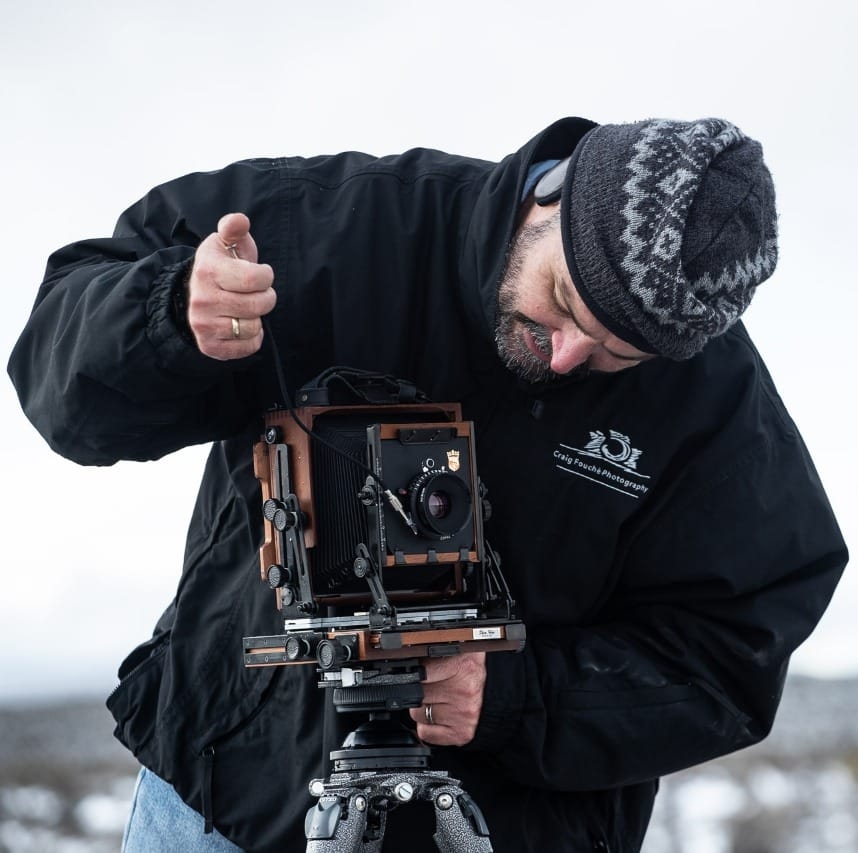
Craig Fouché, Rogge Cloof, Sutherland, South-Africa ©2020 Kirsten Frost Photography